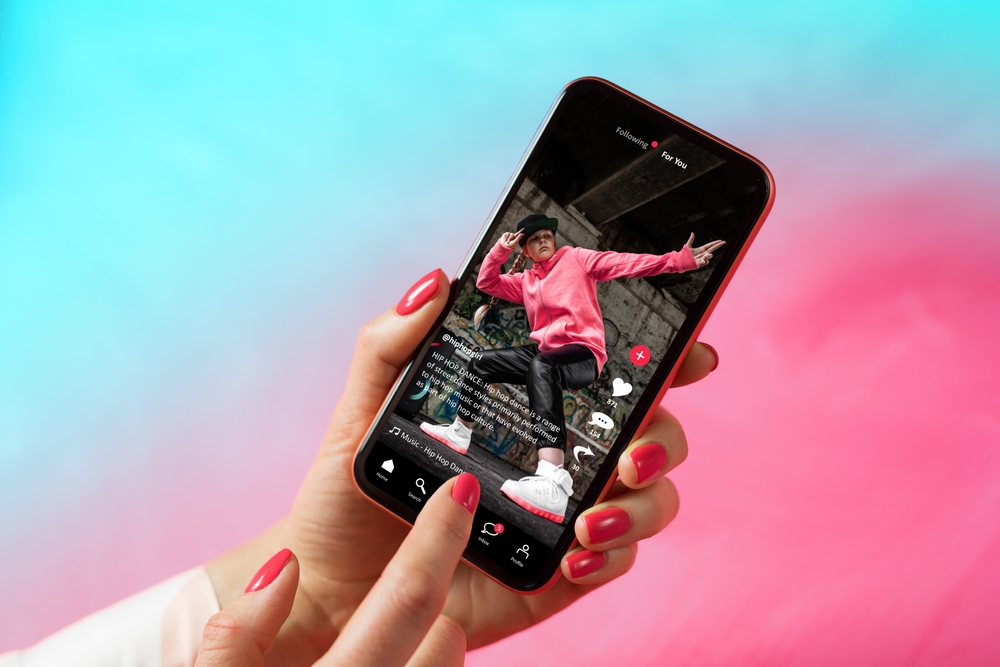11 Outdated Social Media Practices Everyone Should Drop
Social media trends evolve quickly, and what worked in the past may no longer be effective today. To stay relevant and maintain meaningful engagement, it’s important to recognize and move away from outdated practices. By updating your social media strategies and adopting fresh approaches, you can connect with your audience more effectively and grow your online presence.
This post may contain affiliate links, which helps keep this content free. Please read our disclosure for more info.
Cross-Posting the Same Content Everywhere

Cross-posting content on multiple platforms may seem like an efficient way to save time, but it often leads to lackluster engagement. Each social media platform is designed for a different type of interaction, meaning what works on one platform may not work on another. For instance, what gets attention on Instagram, such as a well-crafted image or short caption, may fall flat on LinkedIn, where professional, longer-form content is preferred. Instead of cross-posting identical content, take the time to tailor your posts to fit each platform’s audience and format. This ensures that your content feels more relevant and personal, which will resonate better with your followers.
Moreover, using the same content across all platforms can also make your brand seem lazy or disconnected. Customizing your approach shows that you understand the unique culture of each platform and care about how your content is consumed. It may take a little extra effort, but it will strengthen your presence and help build more meaningful interactions with your audience.
Neglecting Video Content

Video content has become the dominant form of engagement across social media. It’s not only more engaging but also more likely to be shared, increasing your brand’s visibility. Platforms like TikTok, Instagram, and YouTube have seen exponential growth because of video-based interactions. By neglecting video content, you are missing out on an entire way to connect with your audience. Videos can highlight product demos, behind-the-scenes processes, and even quick tips or how-to content that appeals to your target demographic.
Additionally, many social media platforms now prioritize video content in their algorithms, meaning video posts often get higher visibility. Short, snappy videos can drive more interaction and even encourage more comments and shares, which helps improve your overall engagement. It’s time to diversify your content mix and make video a core part of your strategy if you want to stay relevant in an ever-evolving social media landscape.
Sending Automated “Thank You for Following” Messages

While sending a quick “thank you for following” message might seem like a nice touch, it’s often seen as impersonal and lazy, especially when it’s automated. Most users can recognize when a message is automated, which can lead to feelings of disengagement rather than connection. A more effective approach is to engage with new followers directly by commenting on their posts, liking their content, or even sending a personalized message when appropriate. This shows genuine interest and helps establish a real relationship from the get-go.
Automated messages may also come off as spammy, especially if the message leads to a sales pitch or a link to a product. Instead of relying on automation, focus on building authentic relationships with your followers. Responding to comments, acknowledging your followers’ posts, and even thanking them in a more personal way will foster a stronger community and improve your overall brand loyalty.
Using Too Many Irrelevant Hashtags

Hashtags are a powerful tool for categorizing content and making it discoverable, but overusing them or using irrelevant ones can dilute your message. Excessively long lists of hashtags often seem like an attempt to game the system, which can come across as inauthentic or desperate for engagement. Instead, focus on using a few targeted hashtags that are highly relevant to your content and audience. Doing this ensures your posts are discoverable to the right people and not just a random crowd.
Using too many unrelated hashtags also risks your content being buried under unrelated posts. Platforms like Instagram, for example, have become more sophisticated in how they rank content, and using irrelevant hashtags can harm your visibility or engagement. Stick to quality over quantity when it comes to hashtags to ensure your content reaches a more engaged and targeted audience.
Focusing Solely on Promotional Posts

While promotional content is important for business growth, relying solely on it can alienate your audience. People follow brands for more than just discounts or product ads; they want valuable, engaging, and relatable content. Focusing exclusively on promotional posts can make your social media presence feel one-dimensional and sales-driven. Instead, balance your promotional content with educational posts, behind-the-scenes content, customer stories, or entertainment to keep your audience engaged.
Engagement is key on social media, and focusing too much on promotions can lead to declining interactions over time. By diversifying your content and showing a more human side of your brand, you create a deeper connection with your followers. This approach helps build trust and loyalty, making it more likely that users will engage with your brand in the long run.
Failing to Engage with Your Audience

One of the biggest mistakes brands can make on social media is failing to interact with their followers. Social media is not a one-way street; it’s a conversation. When you fail to respond to comments, engage with user-generated content, or initiate discussions, you risk appearing distant and disconnected. Social media provides an excellent opportunity to build a community, but it requires ongoing engagement. Responding to comments, liking posts, and even reposting user content show that you value your followers and foster a sense of belonging.
Engaging with your audience goes beyond just replying to comments. It also involves asking for feedback, conducting polls, and creating content that invites interaction. The more you engage with your followers, the more likely they are to stay loyal to your brand and continue interacting with your content. Engagement is a two-way relationship that builds trust and encourages continued support from your community.
Ignoring Analytics

Many brands overlook the importance of analyzing their social media performance, relying on instinct rather than data. Ignoring analytics means missing out on valuable insights that could guide your content strategy. Social media platforms offer a wealth of information about your audience’s behavior, engagement patterns, and content performance. By tracking these metrics, you can identify what resonates with your followers, allowing you to optimize your content and posting schedule.
Understanding which posts perform best and when your audience is most active can help you create more effective and engaging content. Additionally, monitoring analytics can help you spot trends, measure growth, and adjust your strategy as needed. Without this data, your social media efforts are essentially guesswork, which can result in wasted time and resources.
Posting Inconsistently

Inconsistent posting is a sure way to lose the interest of your audience. Whether you post daily or weekly, maintaining a consistent schedule helps build anticipation and keeps your brand top of mind. If you’re only posting sporadically, it can feel like your brand is inactive or disengaged, which leads to a drop in audience trust. Social media thrives on regular interaction, and a lack of consistency can make it harder to build momentum.
A consistent posting schedule also boosts visibility within the platform’s algorithm, increasing the chances that your content will be seen by a larger audience. Consistency is key in building a solid social media presence, as it shows that your brand is dependable and actively engaging with followers. The more regularly you post, the more opportunities you create for followers to engage with your content.
Overloading Your Feed with Stock Photos

Stock photos have their place, but using them too frequently can make your social media feed feel impersonal and generic. Your followers want to connect with the real, human side of your brand, and stock photos often fail to create that personal connection. Instead of relying solely on stock images, incorporate authentic photos, behind-the-scenes shots, and user-generated content.
Authentic images help your audience connect with your brand in a more meaningful way. Showing real people, real products, and real moments creates a sense of trust and relatability. Stock photos can make your brand feel detached and less transparent, which is why it’s important to balance them with genuine, engaging content that represents your brand accurately.
Overposting on Stories

Stories are an effective way to keep your audience engaged, but overdoing it can lead to content fatigue. Posting too frequently on stories can overwhelm your followers, causing them to tune out or skip your content altogether. It’s important to strike a balance and avoid bombarding your audience with too many updates in a short period. Instead, focus on posting stories that add value, whether it’s behind-the-scenes content, sneak peeks, or interactive elements.
Overposting on stories can also result in a loss of interest, as followers may start to view your brand as intrusive. Posting strategically, without overloading your followers, keeps your content fresh and engaging. Quality should always trump quantity when it comes to stories.
Not Having a Clear Brand Voice

A lack of a consistent brand voice can confuse your audience and undermine your credibility. Social media is a great platform to showcase your personality, but if your tone, language, and messaging are all over the place, it can make your brand seem disjointed. Whether your voice is friendly, professional, humorous, or authoritative, it’s important to maintain consistency across all your social media platforms. A clear, cohesive voice helps establish a recognizable identity, making it easier for followers to relate to and trust your brand.
Inconsistencies in tone can also make it harder for new followers to understand what your brand stands for. When you have a defined brand voice, it becomes easier to create content that resonates with your target audience. A strong, consistent voice builds a connection with your followers, helping you stand out in a crowded social media space.
This article originally appeared on Avocadu.
